Blue Mountain Coffee Fine Coffee treatment method
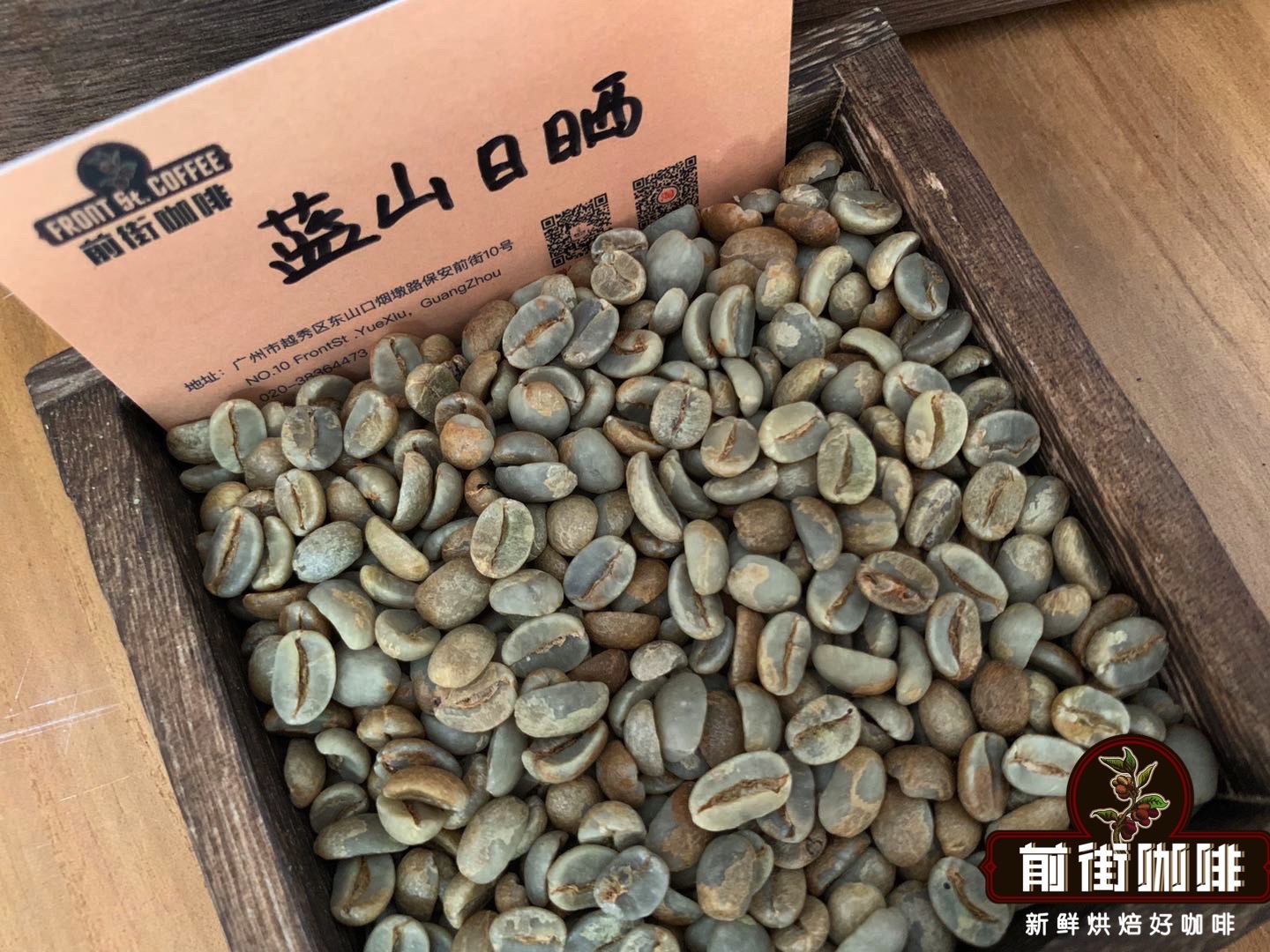
Professional coffee knowledge exchange More coffee bean information Please pay attention to coffee workshop (Weixin Official Accounts cafe_style)
When it comes to coffee, the most famous coffee should be Blue Mountain Coffee. Not all the coffee called Blue Mountain Coffee is the real Blue Mountain Coffee beans. In fact, today's Blue Mountain Region is a small place with only 6000 hectares of planting area, so it is impossible to label "Blue Mountain" coffee all grown there.
Front Street Coffee's Jamaica Blue Mountain coffee comes from Clifton Manor, just above Clifton Hill, the oldest coffee growing area still functioning in Jamaica, and Clifton Farm is the only one in Jamaica with the "Rainforest" logo.
Front Street Coffee Jamaica Blue Mountain One
Farm: Clifton Farm
The Sharp Family
Certificate: Tropical Rainforest Certification
Location: Newcastle area
Total area: 250 acres
Coffee plantation area: 180 acres
Average altitude: 4300 feet (1,310.64 meters)
Treatment method: washing
Type: Iron Pickup
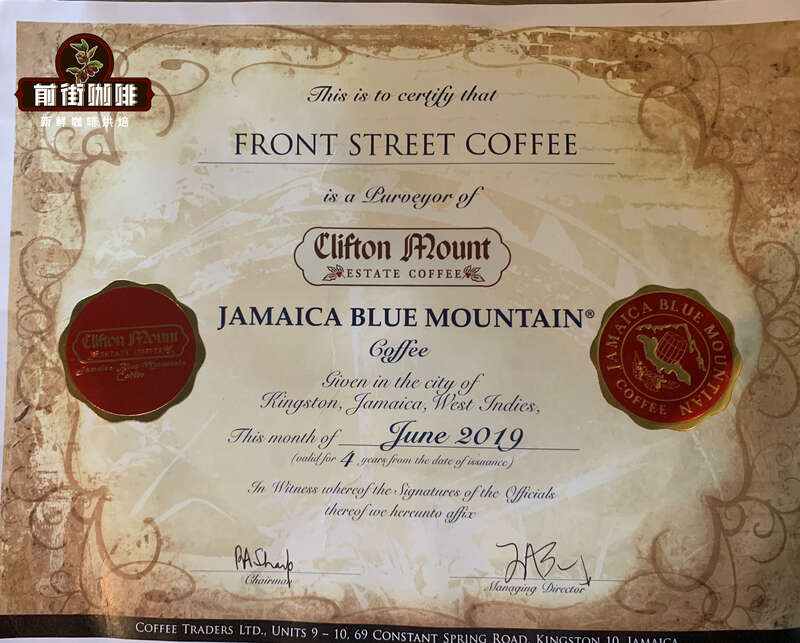
Coffee was grown and produced at Clifton Farm as early as the mid-18th century (circa 1750), and today Clifton Farm is the largest estate in the area and by international standards small-scale, many owned by small landowners on land that the Sharps have worked for two centuries. There is sufficient altitude, mild afternoon cloud shade, plenty of sunshine and mineral-rich planting soil to provide good growth conditions for coffee trees and prolong the ripening of coffee cherries.
CIB stipulates that only coffee produced above 666 meters in Jamaica Blue Mountain can be called Jamaica Blue Mountain Coffee. Coffee produced below 666 meters in Jamaica Blue Mountain is called [Jamaica Alpine Coffee]. Coffee produced below 666 meters in Jamaica Blue Mountain is called [Jamaica Alpine Coffee]. Its grades are divided into NO.1, NO.2, NO.3 and PB specially selected by hand according to bean size. Among them, the basic standard of NO.1 blue mountain raw beans is beans with more than 17 meshes, defect rate less than 3%, moisture content about 13%, etc.
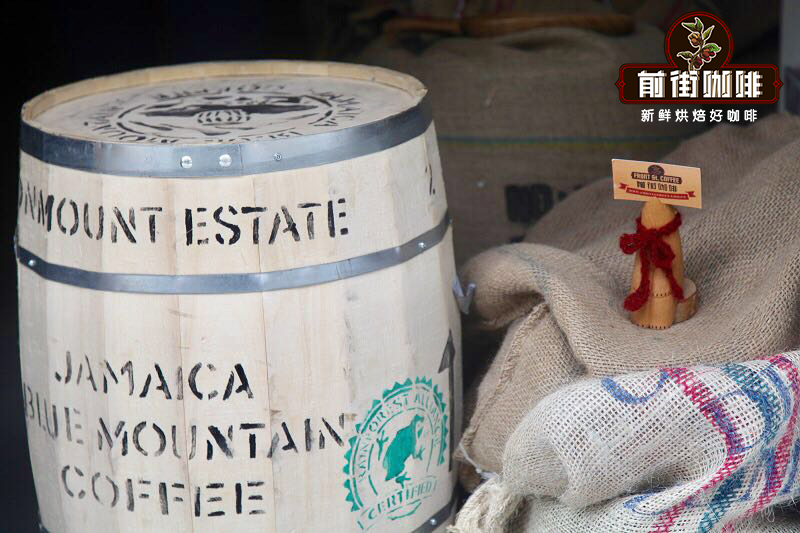
Jamaica was the last country to ship coffee in barrels. Only through the Jamaica Coffee Industry Board (C. I .B) stipulates that this series of stringent standards of identification, coffee can receive the government award of the guarantee, officially titled "Blue Mountain" name.
Jamaica Blue Mountain Coffee is harvested annually from June to November and is generally artificially harvested. Because coffee trees grow entirely on rugged hillsides, the picking process is difficult and unskilled local women workers simply cannot do it. It's important to pick coffee beans that are ripe, as immature or overripe can affect the quality of coffee.
treatment
Blue Mountain coffee has been processed in the form of water until Clifton Farms pioneered the introduction of sun-treated Blue Mountain No. 1 coffee in 2020.
Blue Mountain coffee is washed by removing most of the pulp from the coffee beans in a peeling machine, and then guiding the shelled beans to a clean tank where they are soaked in water for fermentation to completely remove the remaining pulp layer. Through water treatment, immature beans and defective beans will be selected due to buoyancy, and then peeled, also known as beating, coffee fruit through the machine to remove the peel, the remaining coffee with pectin placed in the fermentation tank fermentation for 1 to 2 days to decompose the pectin attached to the coffee beans. Then clean the coffee beans with clean water, and then dry the raw beans with sheepskin until the moisture content reaches 12% and store them. Remove the sheepskin when exporting.
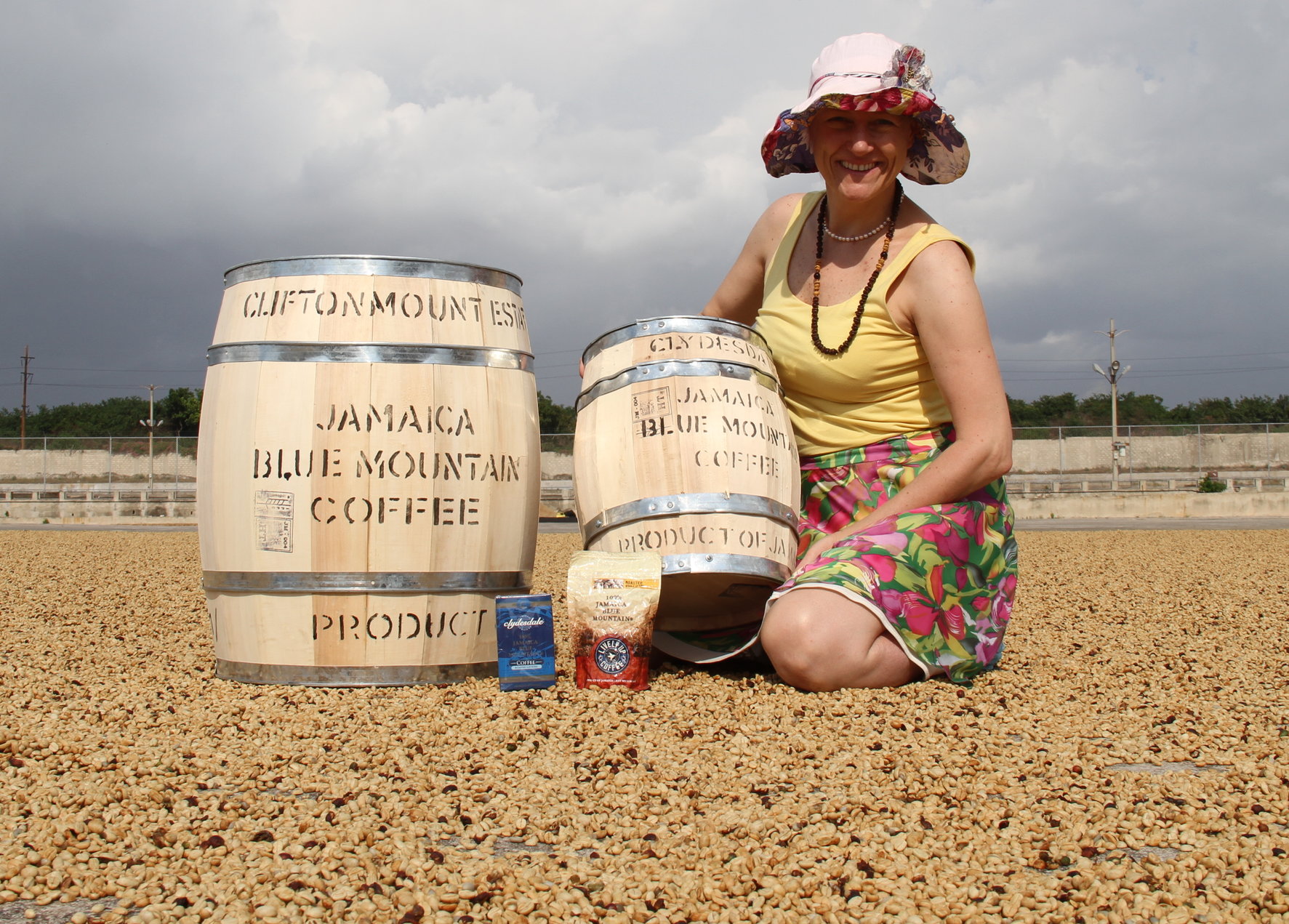
Clifton also has high requirements for sun treatment. First, after picking, strict red fruit screening is carried out to screen out overripe, unripe and spoiled fruits. After screening, coffee fruits will be placed on an elevated platform for drying. In the drying process, managers will also turn them over to avoid uneven sun exposure. After the moisture content of coffee drops to about 12%, it is dried, shelled and polished, and stored for export.
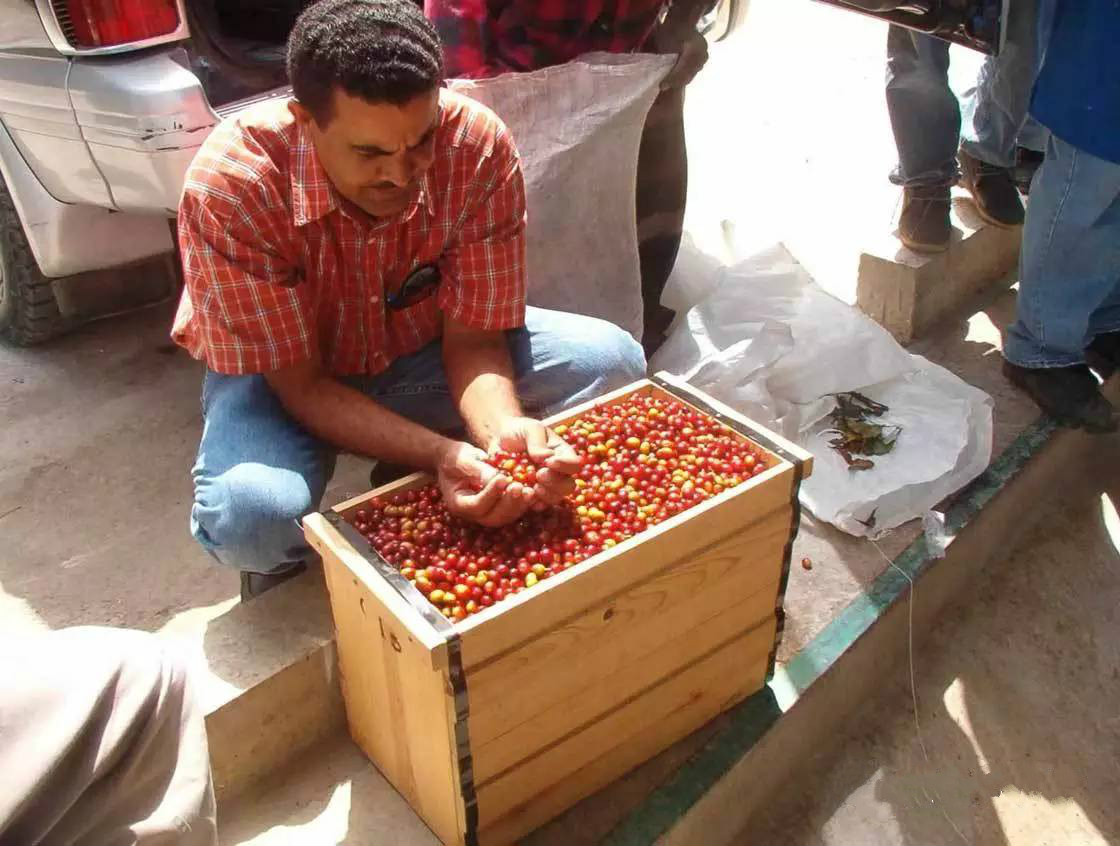
Why has Blue Mountain Coffee been washed and not treated in any other way? Qianjie believes that the advantage of washing treatment is that it can stably control the flavor of each batch of coffee beans and maintain the high quality title of Blue Mountain. In recent years, due to the updating and iteration of the solarization method, the delicate solarization treatment can also stabilize the flavor of coffee very well. In addition, the taste of coffee in the international boutique market has changed from strong aroma to fresh and sour. Blue Mountain has also begun to innovate.
Analysis of Front Street Coffee Roasting
Jamaica Blue Mountain coffee altitude is not high, traditional Typica varieties make raw beans belong to soft, helpless high temperature characteristics, if the roasting energy to a higher number, the temperature rise rate will become very high, at this time, once the roasting degree is not well mastered, smoke will appear. In order to highlight the mellow taste of Blue Mountain coffee and the flavor of chocolate and caramel, Front Street Coffee will choose the roasting degree of medium and deep roasting.
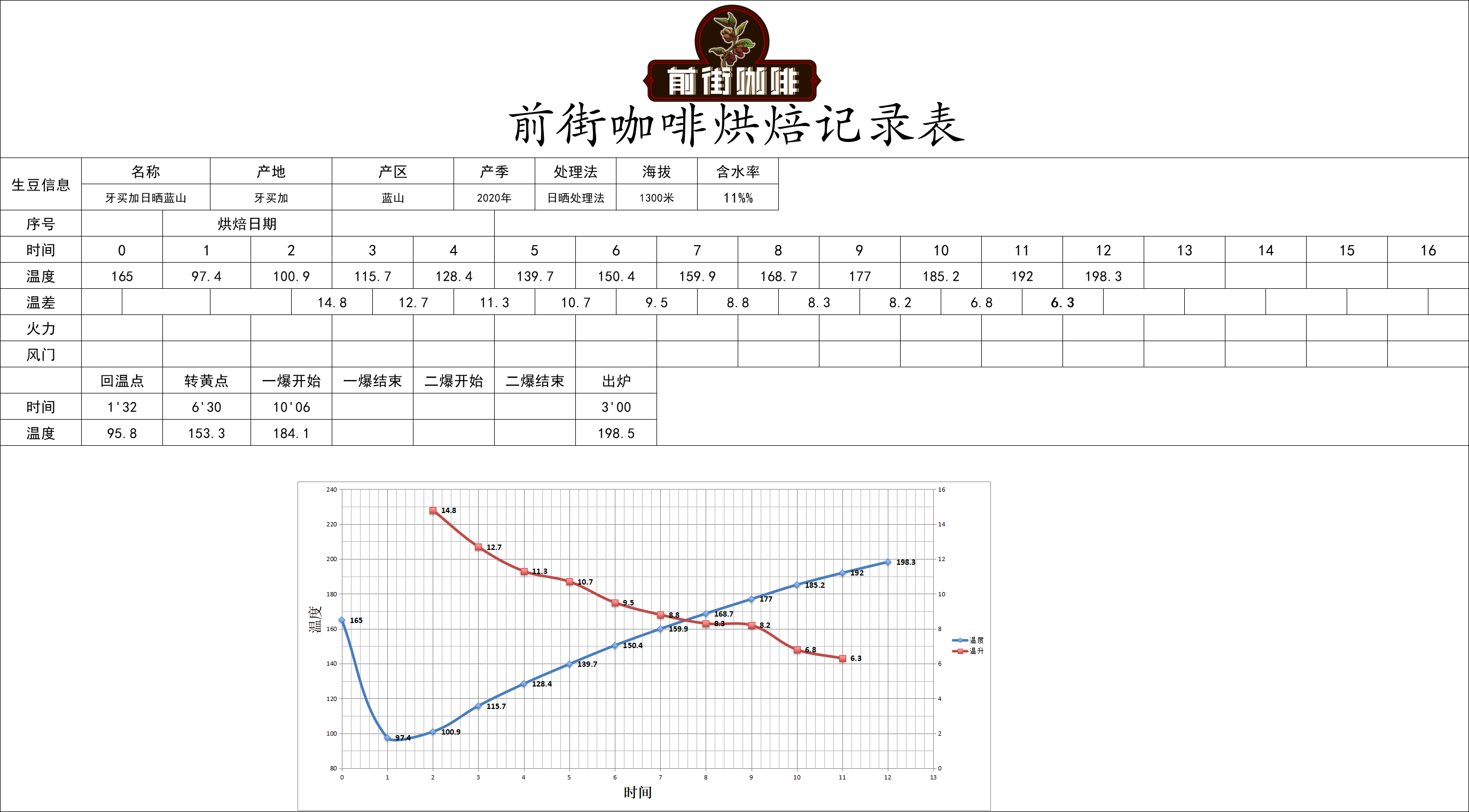
Temperature of beans entering: 170°C, yellowing point: 5 ′ 10,153°C, first explosion start: 8 ′ 12,182.5°C, first explosion development: 4 ′ 00,201.3°C
Front Street Coffee Brewing Advice
Because this is medium roast, Front Street Coffee feels like brewing Blue Mountain coffee with KONO.
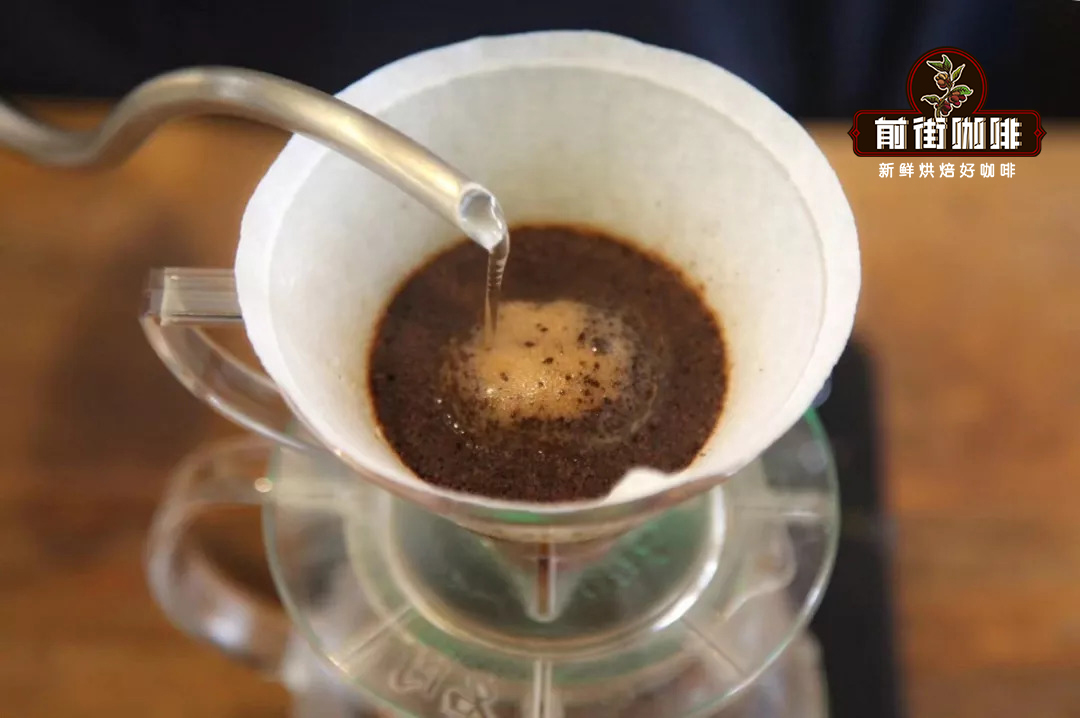
KONO's ribs stop when they are less than half the height of the filter cup. This design is actually to ensure that the filter cup adheres to the wall of the filter cup after wet water and restricts the airflow. This will increase the water absorption time of the coffee powder particles, so that the extracted coffee is more uniform as a whole and enhances the mellow taste. And the groove skeleton at the bottom of the kono filter cup is a key design to create a siphon effect for later brewing.
Filter cup: KONO, powder amount: 15g, water powder ratio: 1:14, water temperature: 87 degrees, grinding degree: medium grinding (20 standard sieve pass rate 65%).
staged extraction
Steaming with 30g water for 30 seconds, injecting water into the center of small water flow to 125g, stopping injecting water until 225g when the water level drops and is about to expose the powder bed, removing the filter cup when the water level drops and is about to expose the powder bed, and extracting for 2 '00 ".
More fine coffee beans, please add private WeChat Qianjie Coffee, WeChat: kaixinguoguo0925
Important Notice :
前街咖啡 FrontStreet Coffee has moved to new addredd:
FrontStreet Coffee Address: 315,Donghua East Road,GuangZhou
Tel:020 38364473
- Prev
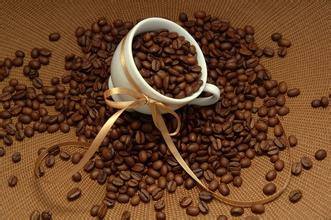
Boutique coffee Blue Mountain Coffee characteristics introduction to Blue Mountain Coffee
Is Jamaican Blue Mountain Coffee the best coffee in the world? Almost everyone who has heard of Jamaica Blue Mountain Coffee knows that it is the most expensive coffee in the world, but not everyone knows why. Like Rolls-Royce cars and Stradivari violins (Stradivarius Violin), when something is born
- Next

Boutique coffee Nicaraguan coffee beans characteristics introduction of Nicaraguan coffee beans
The excellent Nicaraguan coffee is among the highest in the world, it is mild and delicious, moderate granule, very fragrant. In many countries, coffee production has been seriously affected for political reasons. Nicaraguan coffee industry is no exception. The 1979 revolution forced coffee planters to flee to Miami. It was followed by a period of uncertainty, and the government considered whether to re-divide it.
Related
- Does Rose Summer choose Blue, Green or Red? Detailed explanation of Rose Summer Coffee plots and Classification in Panamanian Jade Manor
- What is the difference between the origin, producing area, processing plant, cooperative and manor of coffee beans?
- How fine does the espresso powder fit? how to grind the espresso?
- Sca coffee roasting degree color card coffee roasting degree 8 roasting color values what do you mean?
- The practice of lattes: how to make lattes at home
- Introduction to Indonesian Fine Coffee beans-- Java Coffee producing area of Indonesian Arabica Coffee
- How much will the flavor of light and medium roasted rose summer be expressed? What baking level is rose summer suitable for?
- Introduction to the characteristics of washing, sun-drying or wet-planing coffee commonly used in Mantenin, Indonesia
- Price characteristics of Arabica Coffee Bean Starbucks introduction to Manning Coffee Bean Taste producing area Variety Manor
- What is the authentic Yega flavor? What are the flavor characteristics of the really excellent Yejasuffi coffee beans?

